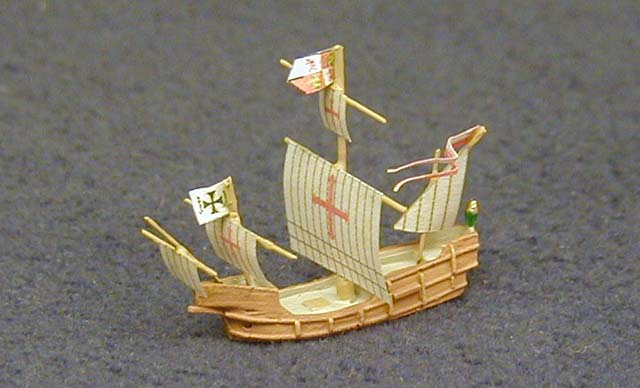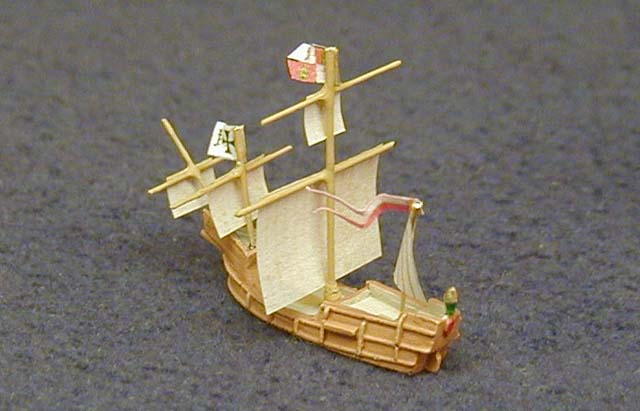Santa Maria

1492
(Johann Wolkersdorfer JW 46)
- Type: Nao (3m)
- Displacement: 108-239 toneladas
- Dimensions: 97 x 26 x 11 ft.
- Crew: 40
- Builder: Galicia, Spain, ca. 1492
- Notes: Santa Maria was the flagship of the squadron, also containing Nina and Pinta, led by Christopher Columbus on the initial voyage of discovery to America. They departed the southern Spanish port of Los Palos on 3 August 1492, stopped at Las Palmas in the Canary Islands for repairs to Pinta, then continued on westward 6 September. Land was sighted from Pinta on 12 October 1492; the island which Columbus named San Salvador is not now known, but was somewhere in the present-day Bahamas. The squadron explored the Bahamas for two weeks, then went south to Cuba on 27 October, which they coasted along for the next six weeks. Heading back toward the Bahamas on 20 November, the Pinta split off to investigate Great Inagua Island and was gone until after the New Year. Meanwhile, on 5 December, Santa Maria and Nina found the northwest tip of Hispaniola, in present-day Haiti. Just after midnight on Christmas day, Santa Maria grounded on a reef; although no one was killed, the ship was ruined. Because the Nina could not transport both ships' companies, some 39 crew volunteered to stay at La Navidad, in a fort built from the flagship's timbers. Columbus departed with the Nina on 4 January 1493, rejoining the Pinta at Isla Cabra two days later. When Columbus returned in November 1493, the fort had been destroyed and all the crew were dead.


 Up
Up




 Up
Up